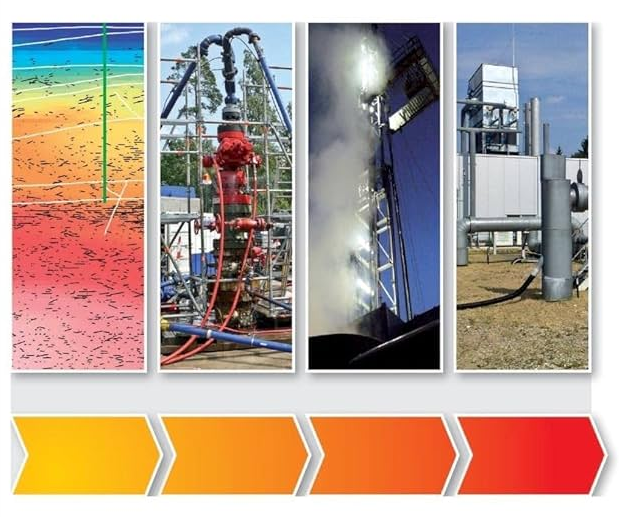Geothermal energy stands as a potent yet underutilized renewable energy source, harnessing the Earth’s natural heat for sustainable power generation. With advancements in technology and growing environmental concerns, geothermal energy presents a compelling solution to reduce reliance on fossil fuels and mitigate climate change. This article explores the benefits, applications, and future potential of geothermal energy, highlighting its role in the global transition towards clean energy.

Understanding Geothermal Energy
Geothermal energy derives from the heat stored beneath the Earth’s surface within the Earth’s core and mantle. This heat continuously flows outward, warming rock and groundwater reservoirs. Geothermal power plants harness this heat through various technologies, converting it into electricity or direct heating for residential and commercial use.
Types of Geothermal Energy Systems
- Direct Use Systems: Direct use systems pump hot water directly from underground reservoirs to provide heating for homes, greenhouses, and industrial processes without converting it to electricity.
- Geothermal Power Plants: These plants use steam or hot water from underground reservoirs to drive turbines connected to generators, producing electricity.
Benefits of Geothermal Energy
- Renewable and Sustainable: Geothermal energy is renewable as the Earth continuously produces heat, making it a reliable and sustainable energy source.
- Low Emissions: Geothermal power generation emits minimal greenhouse gases compared to fossil fuels, contributing to cleaner air and reduced carbon footprints.
- Base Load Power: Unlike solar and wind, geothermal energy provides consistent, baseload power, operating 24/7 with high reliability and minimal variability.
Applications of Geothermal Energy
- Electricity Generation: Geothermal power plants are operational in many countries, providing electricity to homes, industries, and communities.
- Heating and Cooling: Direct use systems heat buildings in winter and can provide cooling in summer through geothermal heat pumps, enhancing energy efficiency.
- Industrial Processes: Geothermal energy supports industrial applications such as food drying, fish farming, and spa resorts, leveraging its stable and cost-effective heat supply.
Global Geothermal Potential
Geothermal energy’s potential is vast and largely untapped:
- Global Resource Availability: Countries with significant geothermal potential include Iceland, the United States, Indonesia, and the Philippines, among others.
- Technological Advancements: Enhanced drilling techniques and geothermal reservoir management technologies are expanding the reach and efficiency of geothermal projects worldwide.
Challenges and Future Outlook
Despite its advantages, geothermal energy faces challenges:
- High Initial Costs: Initial exploration and drilling costs can be high, although operational costs are low over the lifetime of geothermal plants.
- Resource Limitations: Not all regions have accessible geothermal resources close to the Earth’s surface, limiting widespread adoption.
Environmental Impact and Sustainability
Geothermal energy is recognized for its minimal environmental impact:
- Land Use: Geothermal power plants have a small physical footprint compared to solar and wind farms, preserving land for other uses.
- Water Use: Some geothermal plants use water, but advanced technologies are minimizing water consumption and improving recycling.
Conclusion
In conclusion, geothermal energy represents a valuable and sustainable solution in the global energy mix. With its low emissions, reliable baseload capacity, and diverse applications, geothermal energy plays a crucial role in reducing greenhouse gas emissions and achieving climate goals. As technology advances and investment grows, geothermal energy is poised to unlock more of Earth’s heat potential, providing clean, affordable, and accessible energy for generations to come.
For businesses and governments looking to invest in renewable energy solutions, geothermal energy offers a reliable and environmentally friendly option. Embracing geothermal power is not just a step towards energy independence but also a commitment to a cleaner, greener future.


